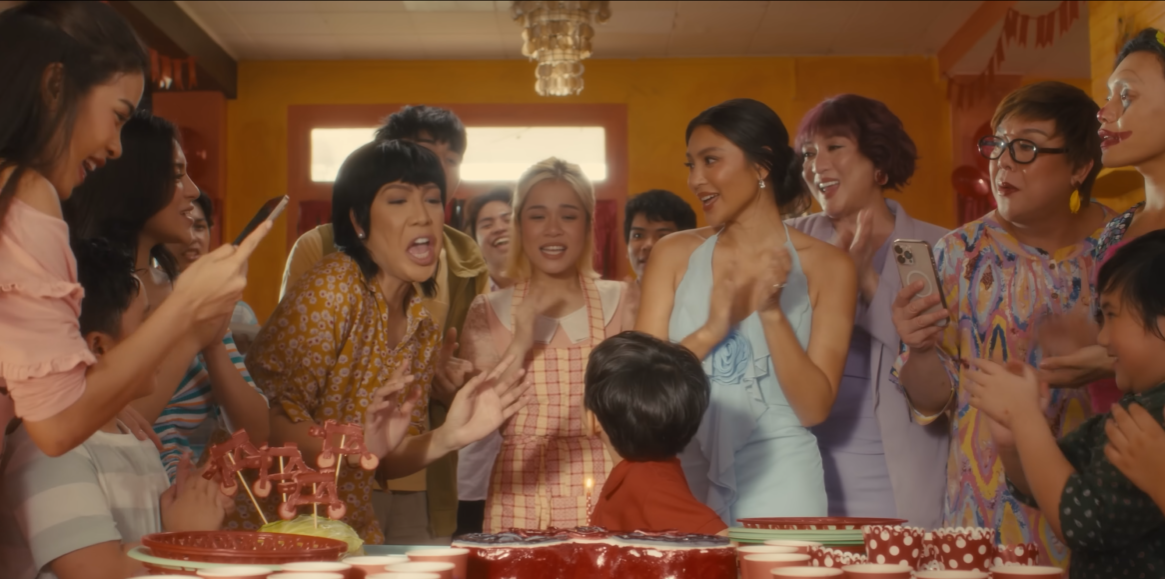‘An Errand’ REVIEW: From An Ivory Tower
‘An Errand’ REVIEW: From An Ivory Tower
An Errand throws you into the middle of a thunderous beach, in a ratio boxed-in just like the TV sets of old, and suddenly into a driver's lounge where a tableau-like staging sets the scene for a driver's tale about hired attempts, inside jobs, and intrigue befitting of their wealthy client.
Perhaps one of the most high-production pieces to come out of the festival this year, An Errand sits precariously from an ivory tower. Notwithstanding the film's blatant class divides and general sleekness, it seems like a film built to explore arthouse sensibilities in service of supposed self-awareness from the elite. This is, after all, a film partially funded by Ayalas.
The film takes place from the position of driver Moroy (Sid Lucero). Newly hired as the driver of one "Sir" (Art Acuña), he's tasked one evening to go down from the high perches of Baguio and down the main city to fetch a pack of Viagra. In truth, this simple fetch quest is just a vehicle to explore the inner machinations that flood Moroy.
This is a film overloaded with ambiguity, and some kind of attempt to humanize the working-class. Often, Moroy's driving is interjected with recollections of both conversations with his boss' mistress and that cold opening in the driver's lounge. Director Dominic Bekaert and writer Sarge Lacuesta attempt to subdue their audience into a participant from the driver's seat through this unfamiliar structure. They reveal bits and pieces of some larger involvement concerning Moroy's boss in an electoral battle, juxtaposed by the hearsay of another driver who escaped death from an assassination attempt. Aforementioned humanization is found in spurts, but most apparent in the fact that the audience does not have a name to tie his boss to, just "Sir".
The non-linear nature of these recollections is detached from any reference to local films that it feels much closer to European arthouse than Filipino cinema. (Director notes in a talkback that he is, in fact, influenced by these.) That doesn't stop it from constructing quite an interesting world that is fueled by divisions, chismis (gossip), and political maneuvering. It's a film that intrigues for the ways in which the world, from Moroy's eyes, is a world of positions. Yet it is also this very same intrigue that makes this film way too overloaded that it just feels cumbersome at times, and empty in its musings.
With good reason, this is a film that winds up feeling polarizing in its outcome. The film is entertaining in the way that mysterious and unfamiliar things are interesting. This very same allure makes the experience take forever to hit because the structure is so unfamiliar that it is difficult to appreciate.
It communicates in such an unfamiliar language that perhaps it was the point to begin with: to speak of a story about wealthy people, perceived by a working class driver, divided in its cinematic style. There have been variations of films already about service drivers and long distance rides — all of which one may find in films like Boundary by Benito Bautista or Huling Biyahe by Armando Lao. This one is just really, really different.
Semantics aside, the most attractive thing about An Errand is how it accentuates Baguio in sight and sound. Some viewers may be familiar with the rather common portrayal of Baguio as a heavenly abode where love and fate find each other. An Errand argues that its escapist nature is built for secrecies, trysts, and muted political affairs.
The 4:3 aspect ratio coupled with composition from Outerhope's Michael Benedicto and choice cuts of old Filipino songs of a style seen long ago in Jon Red's Astigmatism make for a Baguio that is paradoxically peaceful and unsettling. It views Baguio as a world walled off in tight spaces and perched views; of spectacles we sometimes see from a distance. Sid Lucero leads a small cast of characters tasked to imprint this divide through subtle dialogue and muted body language.
To that effect, the immediate efficacy of An Errand lies in its moodiness. This is not a film constructed kindly. It chooses to luxuriate in a rather loose and unbounded form that justifies the polarized reactions it inevitably receives. One would argue it is exactly the type of film more appropriately found in the MUBI catalog because it isn't the friendliest film for the casual moviegoer, nor the seasoned festival viewer. Take its allure accordingly.
If you liked watching this, you might be interested in the following films: Astigmatism (Jon Red), 'Di Natatapos Ang Gabi (Ato Bautista), The Headhunter's Daughter (Don Josephus Ebrahan)
‘An Errand’ premiered last August 5, 2024 at the 20th Cinemalaya Independent Film Festival as part of the Full Length Main Competition category.
















